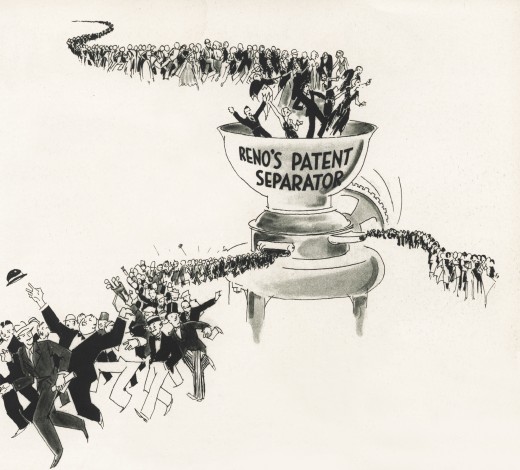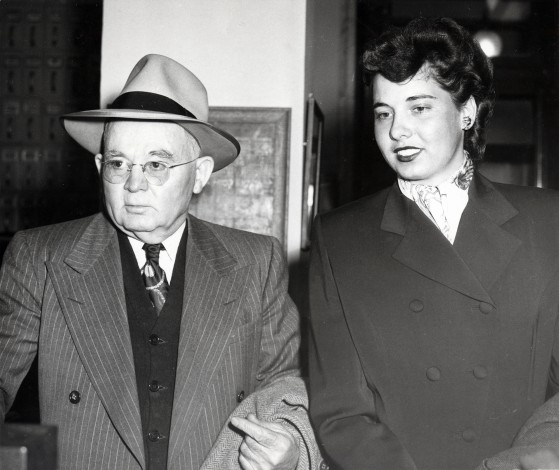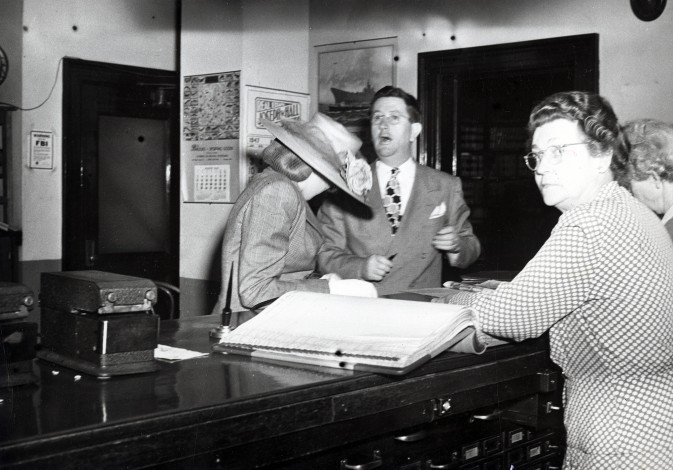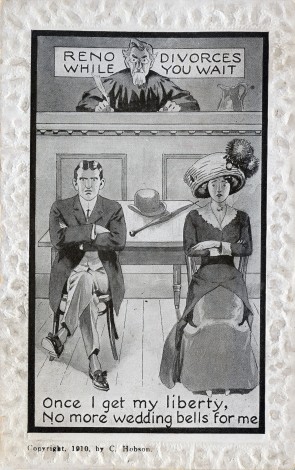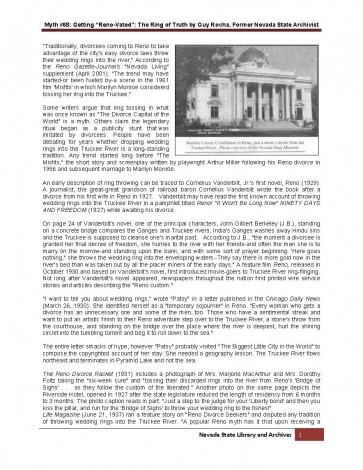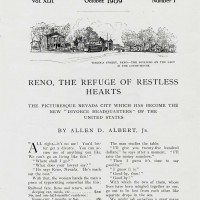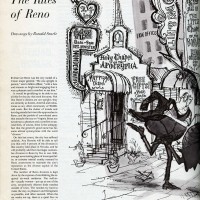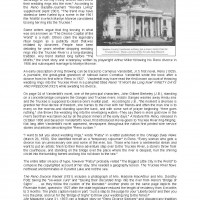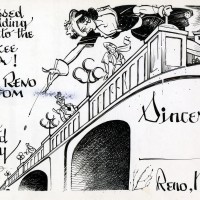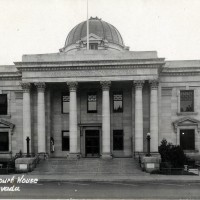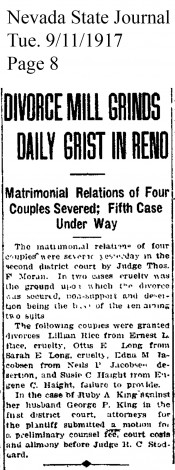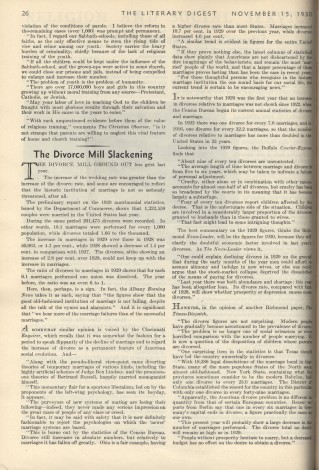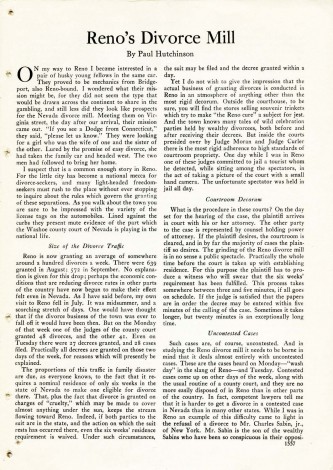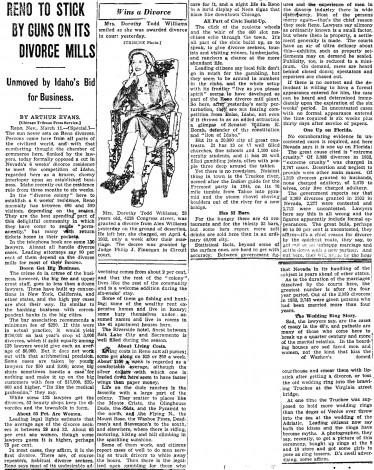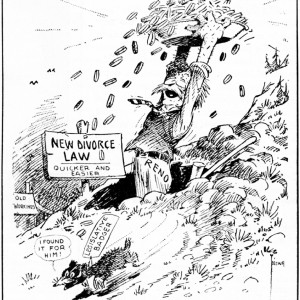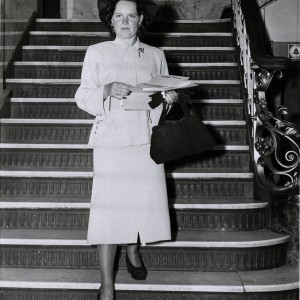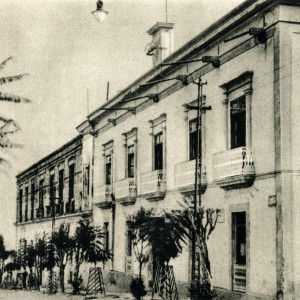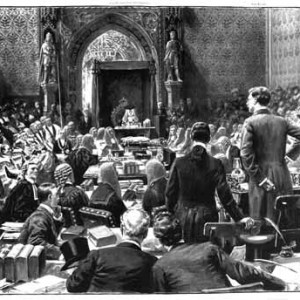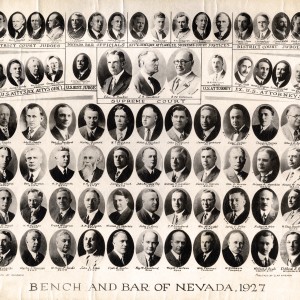The technical requirements of the Reno divorce inspired a great deal of curiosity, prompting the publication of many articles, brochures, and books that outlined the process in great detail. Reno attorneys and judges received countless letters asking for direction and advice by those contemplating a trip to the divorce capital.
A Reno divorce usually started with a visit to your hometown lawyer, who would contact a Reno lawyer on your behalf to get the ball rolling. You would be told that a “quick” divorce was an uncontested one and that you would be required to establish “permanent” residency in Nevada before the divorce suit could be filed.
Your lawyer would then serve a summons to your spouse in hopes that there would be no contesting the process. Your spouse (technically the defendant) could then either plan to appear in Reno for the divorce hearing, or give power of attorney to a different Reno lawyer to appear in court on his/her behalf, for a fee much lower than that of the plaintiff’s attorney (who had more work to do).
You would arrive in Reno by train, automobile, or later, plane, and usually be greeted upon arrival by the attorney or a representative of your chosen accommodations. The length of time required for residency changed over the years, but “doing time” prohibited you from leaving the state for more than 24 consecutive hours. You would need to secure a resident witness to testify that you had been seen in person each day.
When the residency period had passed, the local lawyer would prepare the court documents, issue the notifications, and schedule your court date. You would arrive at the Washoe County Courthouse, located just south of the Truckee River, and walk up its stairway to the designated courtroom. In your testimony, you would be required to state your chosen grounds for divorce and confirm that it was your intention to remain in the state as a permanent resident. Your resident witness would confirm that you had been seen within the state’s borders each day of your residency.
The court appearance was typically over within five minutes, and you would soon be on your way to kiss the courthouse columns in gratitude with your decree in hand.
Featured Resources
The “Divorce Mill”
The speed and efficiency of migratory divorce centers led to their frequent characterization as “divorce mills.” It was a term uniquely suited for the modern age of automation and standardization. Married people would enter on one side, and in short order, emerge from the other as separated entities.
Often portrayed in terms of a grist mill grinding out divorces, the metaphor was also a commentary on the high volume of Reno divorces. Local newspapers reported regularly on the occasional upsurges and slowdowns in the operations of the divorce mill, apparently finding nothing derogatory in the term.
The industry inspired other related metaphors, depicting the so-called “separation center” as a cream separator, factory, or assembly line. Although other towns and states were labeled as divorce mills through the late 19th and early 20th centuries, Reno became the most famous and enduring, prompting countless headlines and cartoons.
